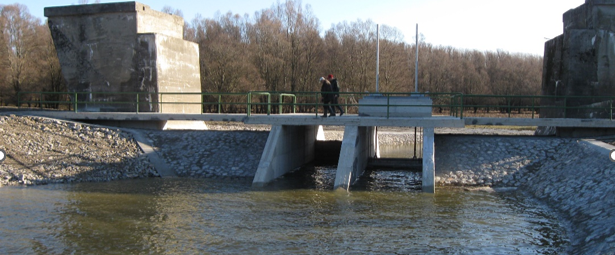Revitalisation of side arms and backwaters of Béda-Karapancsa (Mocskos Duna)


NBS info
| Country | Romania |
| River, water body | Danube |
| Stage | RF |
| Size | 1000 ha |
| Geotype | Local |
| Innovative Solutions |
 |
Project summary
The project tackled the urgent task of preserving two globally threatened bird species, the pygmy cormorant (Phalacrocorax pygmeus) and the ferruginous duck (Aythya nyroca), in the dynamic ecosystem of the lower Danube region. These species faced serious threats including habitat degradation, human activities, and insufficient cross-border cooperation in conservation. Despite being priority species for LIFE Nature funding in the EU, their populations in the wetlands of southern and southeastern Europe, particularly along the lower Danube, were declining. The project aimed to support cross-border cooperation between Romania and Bulgaria to implement coordinated conservation efforts across key Natura 2000 sites. It focused on restoring and enhancing important wetland habitats for breeding and feeding activities through initiatives like creating freshwater pools and managing reedbeds. These efforts were needed for the long-term survival of these species in the region.
Best practices and references
The NBS strategy prioritized habitat restoration and enhancement for Phalacrocorax pygmeus and Aythya nyroca. Wetland habitats along the lower Danube, like reedbeds and freshwater pools, were restored to create sanctuaries for these birds, supporting biodiversity. Sustainable land management practices were emphasized to address habitat degradation and promote ecosystem health, including controlling invasive species and reducing fragmentation. Stakeholder engagement focused on raising awareness about bird conservation and encouraging sustainable behaviors. Monitoring and adaptive management were key, allowing for assessment and adjustment of strategies based on real-time feedback. This approach optimized conservation efforts and ensured long-term sustainability.
Environmental, socio-cultural, economic impacts
The project successfully maintained breeding populations of P. pygmeus and A. nyroca along the lower Danube, with 1590 and 400 breeding pairs in Romania, and 770 and 155 breeding pairs in Bulgaria, respectively, meeting Favourable Reference Values. Moreover, it expanded their breeding and feeding areas by 1200 hectares each in both countries. A cross-border protected area of 44,297 hectares in Romania and Bulgaria demonstrated integrated conservation efforts, inspiring similar initiatives. Fisheries management was enhanced through seminars, workshops, and stakeholder engagement, benefiting targeted and other priority species. These efforts secured the favorable conservation status of the species in line with EU Birds Directive. The project advanced the Lower Danube Green Corridor Agreement by expanding Natura 2000 sites, restoring 1200 hectares of wetlands, and improving ecological coherence along the lower Danube.
Replication and scalability
Participation process
Through seminars, workshops, and public events, stakeholders were informed about the benefits of NBS and encouraged to support conservation efforts.The project began by establishing necessary structures and financial frameworks for Natura 2000 site support. Efforts included understanding species' needs, engaging stakeholders, and developing strategies to address mortality issues. Progressing, the focus shifted to strengthening cross-border networks along the lower Danube, fortifying administrative and financial mechanisms, and preventing water pollution.
